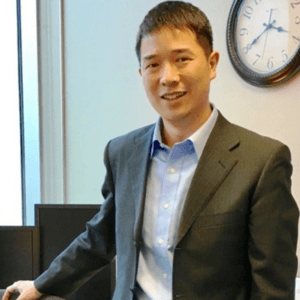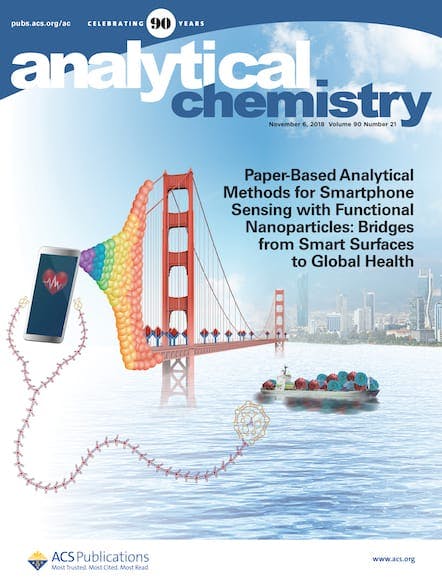Professor Jianping Fu, Ph.D., a Professor of Mechanical Engineering at the University of Michigan, Ann Arbor, is this year’s Analytical Chemistry Young Innovator Award recipient. This award honors an early-career researcher who demonstrates exceptional technical advancement and innovation in the field of microfluidics or nanofluidics. The award is co-sponsored by Analytical Chemistry and Chemical and […]

Professor Jianping Fu, Ph.D., a Professor of Mechanical Engineering at the University of Michigan, Ann Arbor, is this year’s Analytical Chemistry Young Innovator Award recipient.
This award honors an early-career researcher who demonstrates exceptional technical advancement and innovation in the field of microfluidics or nanofluidics. The award is co-sponsored by Analytical Chemistry and Chemical and Biological Microsystems Society (CBMS).
Professor Fu will receive an award plaque and an honorarium of US $2,500.
“It is a great honor to be selected by the award committee as the recipient of this year’s award. I feel much honored to join the past awardees who I have admired for a long time, including my Ph.D. advisor, Dr. Jongyoon Han, who first introduced me to the micro/nanofluidics research field,” says Professor Fu.
Getting to Know Professor Fu

Professor Fu’s research interests lie at the nexus of engineering, biology, and medicine. Specifically, he is interested in integrating bioengineering tools, stem cell biology, and developmental biology to advance regenerative medicine and human biology.
He is currently a Full Professor of Mechanical Engineering at the University of Michigan at Ann Arbor, with courtesy appointments in Biomedical Engineering and Cell & Developmental Biology. Since very early in his academic career, he has been interested in developing new micro/nanoscale technologies for addressing key challenges and knowledge gaps in biomedical and biological fields.
In recent years, his research group has pioneered the development of human stem cell-based embryo models using micro/nanoengineering tools. This emerging field is very exciting, as human development remains challenging to study, given limited access to human embryo samples. Thus, stem cell-derived human embryo models have tremendous applications for advancing human embryology, embryo toxicology, and reproductive and regenerative medicine without using intact human embryos.
“It is the sheer curiosity that has enticed us to explore uncharted areas in stem cell biology and developmental biology, while at the same time leveraging our expertise in micro/nanofluidics to develop enabling stem cell culture tools for new fundamental studies. It has been a very gratifying journey for us, and our research has made fundamental contributions to the emerging synthetic human embryology field, which is garnering significant interests from stem cell biologists, developmental biologists, synthetic biologists, and bioengineers,” says Professor Fu.
Read an Interview with Professor Fu
I caught up with Professor Fu recently to learn more about his research and what he will be doing next. Here are the highlights of our conversation.
What advice would you give to upcoming researchers in the field?
I would think the next-generation researchers in the field should be interdisciplinary, adventurous, and daring to enter competitive fields, especially those emerging areas with plenty of room for asking new fundamental questions. The upcoming researchers in the field should be quick learners who can incorporate new knowledge and technologies into their toolbox.
Do you have an ACS paper that you would like to share? Why did you choose this one?
Here is a paper we published in ACS Nano a few years ago. In this paper, we demonstrated for the first time that nanotopography influences adhesion, spreading, and self-renewal of human pluripotent stem cells. This paper was one of the first papers we published while exploring the mechanobiology of human pluripotent stem cells using micro/nanoengineering tools.
Nanotopography Influences Adhesion, Spreading, and Self-Renewal of Human Embryonic Stem Cells
ACS Nano 2012, 6, 5, 4094–4103
DOI: 10.1021/nn3004923
Tell me a little about your research and work, and some of the important applications that you are working on that will benefit society?
My most important research contribution is on developing bioengineering strategies to model human embryonic development with human pluripotent stem cells (hPSCs) (see Y. Shao, et al. Nature Communications, 2017; Y. Shao, et al. Nature Materials, 2017; N. Rivron, et al. Nature, 2018; X. Xue, et al. Nature Materials, 2018; Y. Zheng, et al. Science Advances, 2019; Y. Zheng, et al. Nature, 2019). Specifically, my group has developed the first hPSC-based, 3D human embryo model that recapitulates successive key early human post-implantation developmental landmarks in a highly controllable, reproducible, and scalable fashion. Our research has significantly broadened our understanding of the developmental potential and self-organizing properties of hPSCs, paving the way for the rapid emergence of the synthetic human embryology field, which is garnering significant interests from stem cell biologists, developmental biologists, synthetic biologists, and bioengineers. The insights reported in our papers have further helped expand the application of hPSCs to an exciting uncharted territory – post-implantation human embryology. Our research achievement in this exciting new field has been hailed as the ground-breaking studies that lay the foundation for the emerging new technology of “artificial embryo”, which was selected as one of the “10 Breakthrough Technologies of 2018” by the MIT Technology Review.
What’s next for you in your research?
There are many, many unresolved mysteries in human development. We are excited to employ the stem cell-derived embryo models that we have developed in the lab for fundamental discoveries. Importantly, we will further leverage our micro/nanoengineering expertise to develop new controllable embryo models to enable fundamental studies of previously inaccessible but critical embryogenic events in human development. We are also excited about the translational applications of these embryo models to study genetic and environmental causes of recurrent implantation failure and early birth structural defects.
Is there anything else that you would like to share?
Looking back, I think my research career has benefited tremendously from research training in distinct fields. From my research experience, I become accustomed to exploring unknown research territories and establishing new research directions. I also have the fortune to work with some very talented graduate students and postdoctoral fellows. The professional and personal relationships with them are one of the most rewarding aspects of my academic career.
